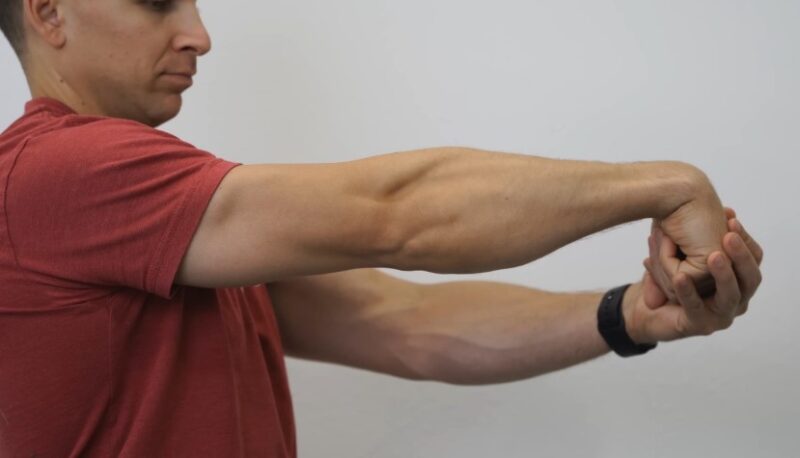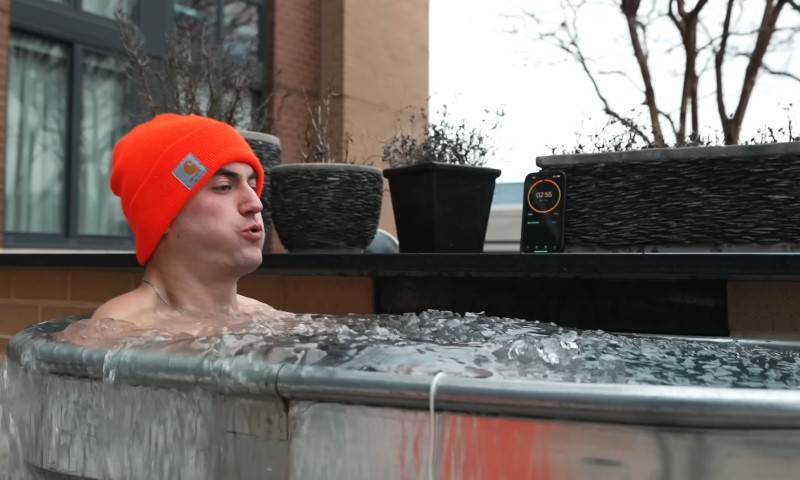Hearing a clicking or popping sound in your elbow can be surprising—even worrying. The good news is that not every click signals something serious. For most people, occasional elbow clicking is harmless and related to soft tissue movement or joint alignment. However, if the sound is persistent, painful, or accompanied by weakness, swelling, or a reduced range of motion, it could be a sign of an underlying condition such as tendon subluxation, joint degeneration, or a mechanical issue like loose cartilage.
According to the American Academy of Orthopaedic Surgeons (AAOS), over 8 million people in the U.S. report elbow discomfort annually, and many of these cases begin with seemingly minor signs like clicking. This article breaks down what causes the noise, when to worry, and how to treat or prevent more serious issues, whether you are an athlete, a desk worker, or just someone noticing new joint sounds.
Table of Contents
ToggleCommon Causes of Elbow Clicking

The clicking sound in the elbow can originate from different structures in the joint. Here’s a breakdown of the most common causes, their mechanisms, and whether they typically cause pain or not:
| Cause | Description | Painful? | Common in |
| Tendon Subluxation | Tendon (often the ulnar nerve or triceps tendon) moves out of its groove when the arm bends or extends | Sometimes | Weightlifters, manual laborers |
| Joint Hypermobility | Looser ligaments allow more motion in the joint, leading to audible clicking or snapping | Usually not | Younger people, gymnasts |
| Osteoarthritis | Degeneration of cartilage causes rough surfaces to grind or catch | Yes | Adults 50+, prior injury |
| Loose Bodies (Joint Mice) | Small pieces of cartilage or bone move freely in the joint space | Yes | History of trauma or arthritis |
| Cubital Tunnel Syndrome | Ulnar nerve becomes irritated and subluxes (snaps over bone) when the elbow flexes | Often painful with numbness | Office workers, cyclists |
| Synovial Plica | The fold in the joint lining gets caught during movement | Sometimes | Repetitive arm movement jobs or sports |
When Is Elbow Clicking a Problem?

If clicking is painless, occurs sporadically, and doesn’t restrict your range of motion, it’s usually benign. Many healthy joints click occasionally due to gas bubbles (cavitation) or mild friction.
However, seek medical evaluation if any of the following symptoms appear:
- Persistent or increasing pain during movement
- Swelling around the elbow joint
- Tingling or numbness in the ring and little fingers
- Elbow locking or catching
- Weakness or instability while lifting
A study published in The Journal of Shoulder and Elbow Surgery (2021) found that patients who delayed evaluation of painful snapping elbows were more likely to require surgical intervention later due to cartilage damage or nerve compression.
Diagnosis: How Doctors Evaluate Elbow Clicking
A physical exam often identifies tendon instability, joint swelling, or nerve involvement. Imaging may be needed in persistent or complex cases:
| Diagnostic Tool | Purpose |
| X-ray | Detects arthritis, fractures, loose bone fragments |
| MRI | Visualizes soft tissues: tendons, ligaments, cartilage |
| Ultrasound | Shows real-time movement of tendons or nerves |
| Nerve Conduction Study | Evaluate the lower nerve if numbness/tingling is reported |
Treatment Options: From Home Care to Surgery
Depending on the underlying cause, treatment can range from basic rest to more advanced interventions:
Conservative Management
For mild, non-painful cases:
- Activity modification: Reduce repetitive elbow motions or heavy lifting
- Physical therapy: Strengthen supporting muscles, especially triceps and forearm flexors
- Anti-inflammatory medications: Ibuprofen or naproxen to reduce irritation
- Elbow bracing: Prevents excessive bending that can trigger tendon or nerve displacement
Targeted Therapy
If tendon subluxation or nerve irritation is suspected:
- Corticosteroid injection: Temporarily reduces inflammation
- Nerve gliding exercises: Prevent nerve entrapment in cubital tunnel syndrome
- Custom orthotics: Worn at night to keep the elbow slightly extended
Surgical Intervention
If conservative treatment fails:
- Ulnar nerve transposition: Moves the nerve to a safer position
- Removal of loose bodies: For mechanical clicking caused by cartilage or bone fragments
- Debridement or repair: For torn or degenerative tendons
Emerging biologic treatments—such as platelet-rich plasma (PRP) and stem-cell injections—are also gaining traction for stubborn tendon or ligament issues. Clinics specializing in regenerative medicine in Spokane report promising early results in reducing inflammation and accelerating tissue healing, especially for patients who want to postpone or avoid surgery. While long-term data are still limited, many orthopedic practices now offer these procedures as part of a comprehensive care plan.
Recovery and Long-Term Outlook

For most individuals experiencing elbow clicking—particularly when it is not accompanied by pain, stiffness, or swelling—the issue can resolve on its own or remain manageable with conservative care. Many cases simply require adjustments to activity, temporary rest, and consistent stretching to stabilize the joint and minimize friction between tendons, ligaments, and bone.
Recovery time depends largely on the underlying cause. In cases of tendon subluxation, where a tendon momentarily slips out of place during movement, physical therapy combined with bracing typically restores joint stability within 4 to 6 weeks. Nerve entrapment, especially when the ulnar nerve is involved and surgery is required, generally takes longer—about 6 to 12 weeks—depending on the extent of compression and the success of the transposition or decompression procedure.
@getadjustednow Bestie, we don’t claim Clicking Elbow’s energy 😬🫣🙅🏼♂️ #elbowpain #elbowpainrelief #NYCchiro #GetAdjustedNow #LearnOnTikTok ♬ original sound – Get Adjusted Now
For those who need arthroscopic removal of loose bodies—fragments of cartilage or bone that float in the joint and cause mechanical clicking—recovery is often quicker, ranging from 2 to 4 weeks before returning to normal activity. In contrast, individuals diagnosed with osteoarthritis of the elbow may not see a full resolution of symptoms, as cartilage degeneration is progressive. In these cases, the focus shifts toward long-term management, including joint-friendly exercise, anti-inflammatory support, and occasional interventions to maintain function and comfort.
Regardless of the cause, maintaining a routine of elbow mobility work, resistance exercises, and avoiding repetitive strain can go a long way in preventing recurrence. Most patients who adopt these strategies report substantial improvement in both function and comfort, often without needing invasive treatment.
Final Thoughts
Elbow clicking isn’t always a red flag, but it shouldn’t be ignored either. Most of the time, it’s a mechanical or anatomical issue that can be managed with therapy or minor modifications to your routine. However, if you’re experiencing pain, weakness, or nerve symptoms, it’s crucial to seek medical advice early, —especially since conditions like cubital tunnel syndrome can worsen over time. Whether you’re a fitness enthusiast, tradesperson, or just someone noticing new joint noises, understanding what’s happening inside your elbow helps you make the right decisions for long-term joint health.
Related Posts:
- Top 400 Hilarious Gym Quotes to Keep You Motivated
- How Long Does It Take to Train for a Half Marathon?
- The Pros and Cons of Wearing Headphones While…
- Half Marathon Training Plan for Beginners - Simple…
- 25 Simple Running Motivation Tips To Get You Moving
- How Far Is a Half Marathon? Everything You Need to Know






